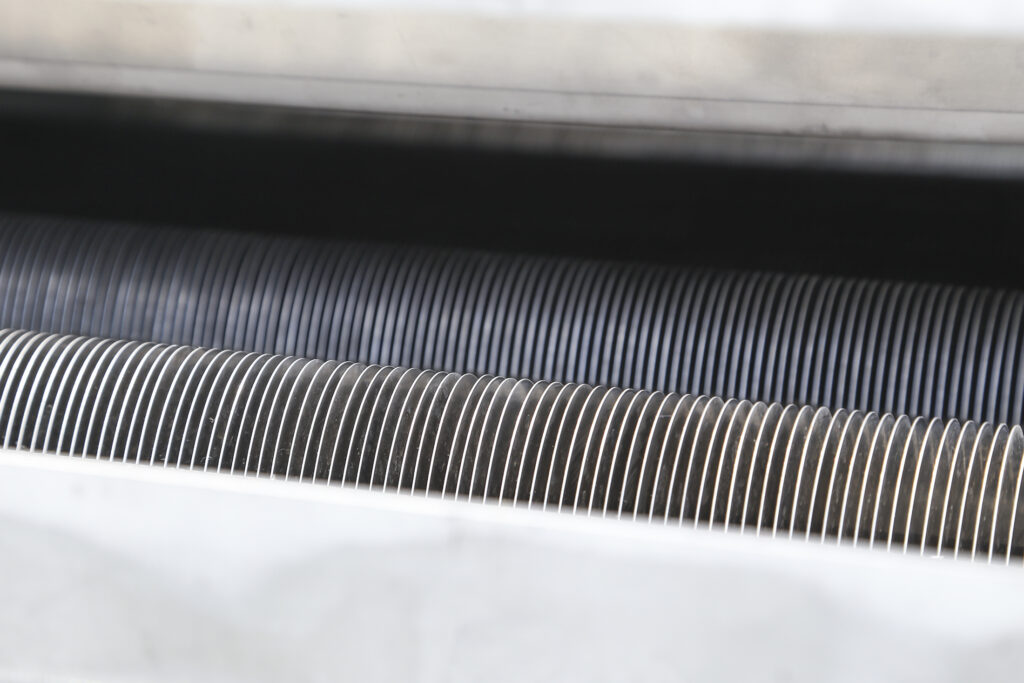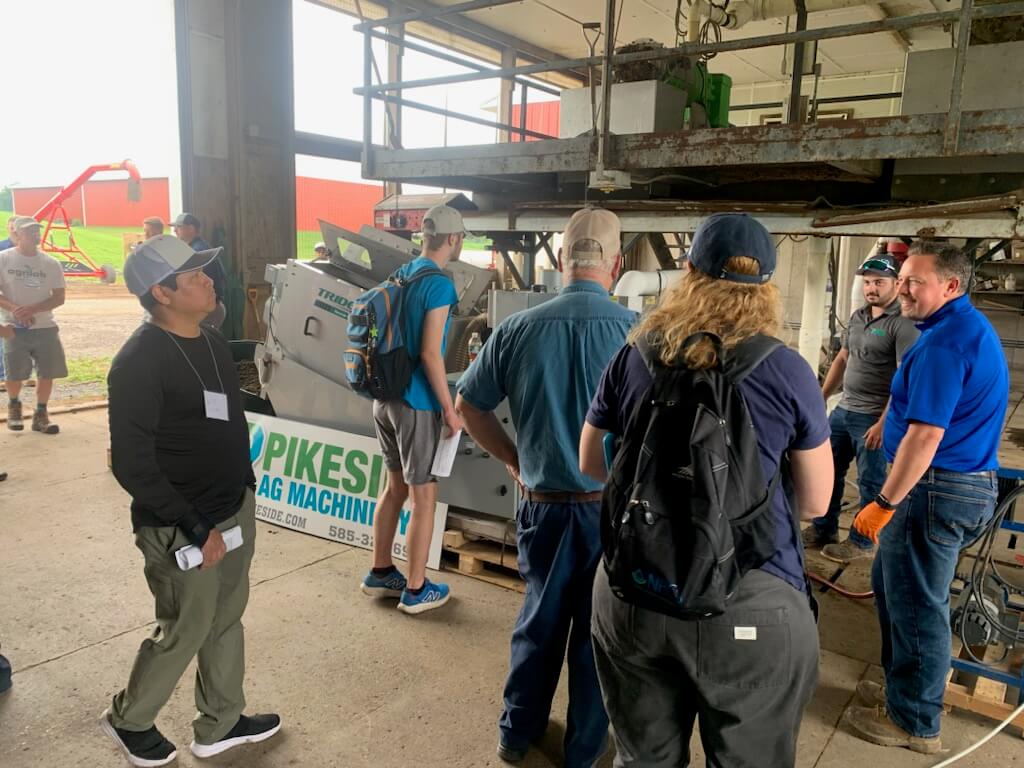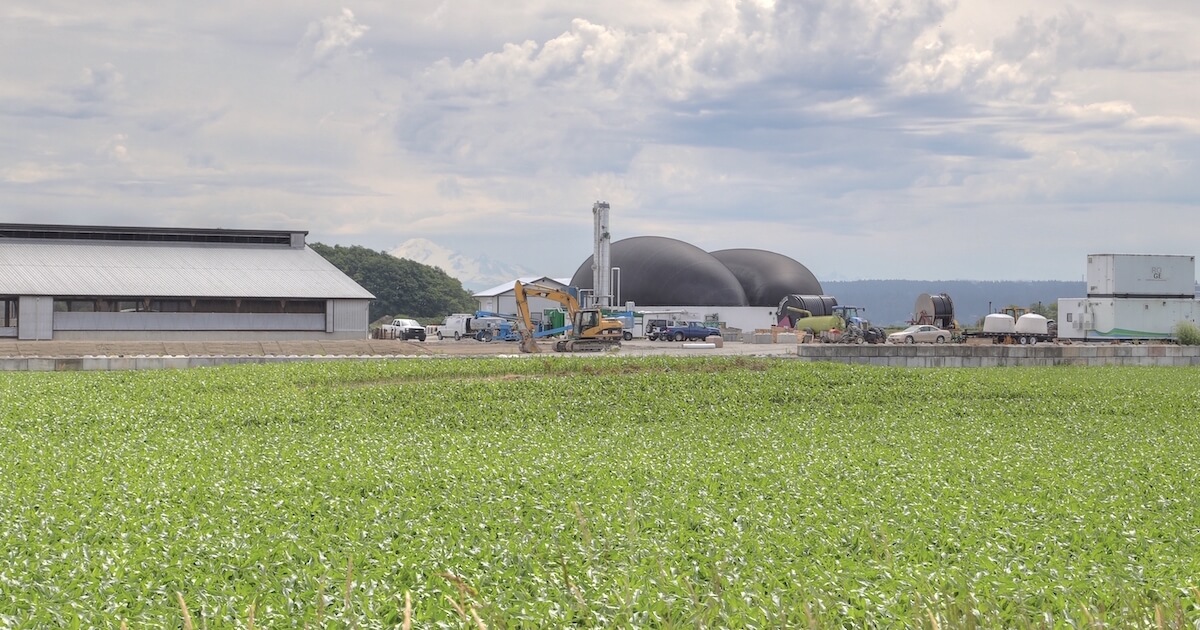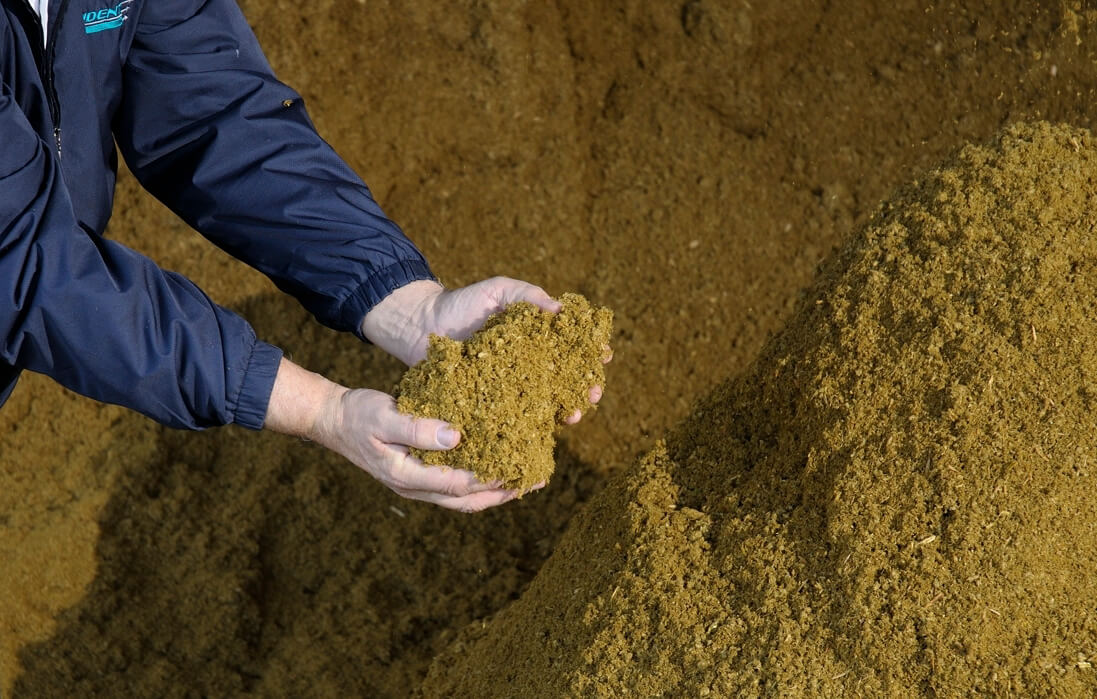Earlier this month our team had an opportunity to showcase advanced manure treatment with the…
Manure thickening in front of an anaerobic digester
Thickening manure pre digester – December 14th, 2020. Anaerobic digesters have become increasingly popular among North American dairy farmers. No wonder – the list of benefits is long (we have addressed some in this article). Converting animal wastes to biogas serves the environment and producers that add energy revenues to their bottom line make their operation more resilient. But the process of creating biogas from manure can be complex. It requires know-how and an operation that is fine-tuned to specific parameters. One of them is the feedstock. When we look at manure as a digester feedstock, managing the solids content plays a key role. This is particularly true for flush dairies that deal with very dilute manure.
CONSISTENT SOLIDS CONTENT
In order to ensure an efficient digestion process, AD systems require a specific solids range. Depending on the type of digester this can be 5-6% TS on the low end and up to 15% TS on the high end. However, flush manure typically has 2% or less Total Solids. An effective pre-treatment is required. AD experts refer to this as manure thickening. The goal of the thickening process is to produce a homogenized feedstock with consistent solids content, and not necessarily the highest possible solids content. Delivering the correct %TS will help maintain an efficient retention time and improves the feedstock’s methane potential value. In addition, manure thickening equipment also helps capture unwanted native cellulosic biomass. This is organic material like lignin compounds that are resistant to the degradation process and reduce the digestion efficiency.

Image: The oval discs of the Wave Separator are integral to the thickening process. The equipment is suitable for different manure collection types including flush or vacuum systems.
TRIDENT’S MANURE THICKENING OPTIONS
With the Rotary Screen Conditioner, the Wave Thickener and a membrane system, Trident offers three manure thickening options. The rotary drum is available in different screen sizes to target specific particle sizes and capture rates. It’s a good option for high volume applications that don’t require very high solids capture rates. The Wave Thickener on the other hand is a great choice for manure thickening applications that target high solids output. The Wave is capable of concentrating waste streams to well over 10% TS. And it does it very efficiently, thanks to a flocculation treatment prior to the mechanical thickening. The third option is Trident’s membrane system which offers impressive filtration results and exceptional effluent quality with the lowest amount of suspended solids.
The bottom line: manure thickening and conditioning is a very cost-effective way to maintain a digester’s efficiency. The equipment is easy to plug into the existing treatment flow on the farm and requires very little maintenance.
Visit us on YouTube for a short demonstration of the Wave.



